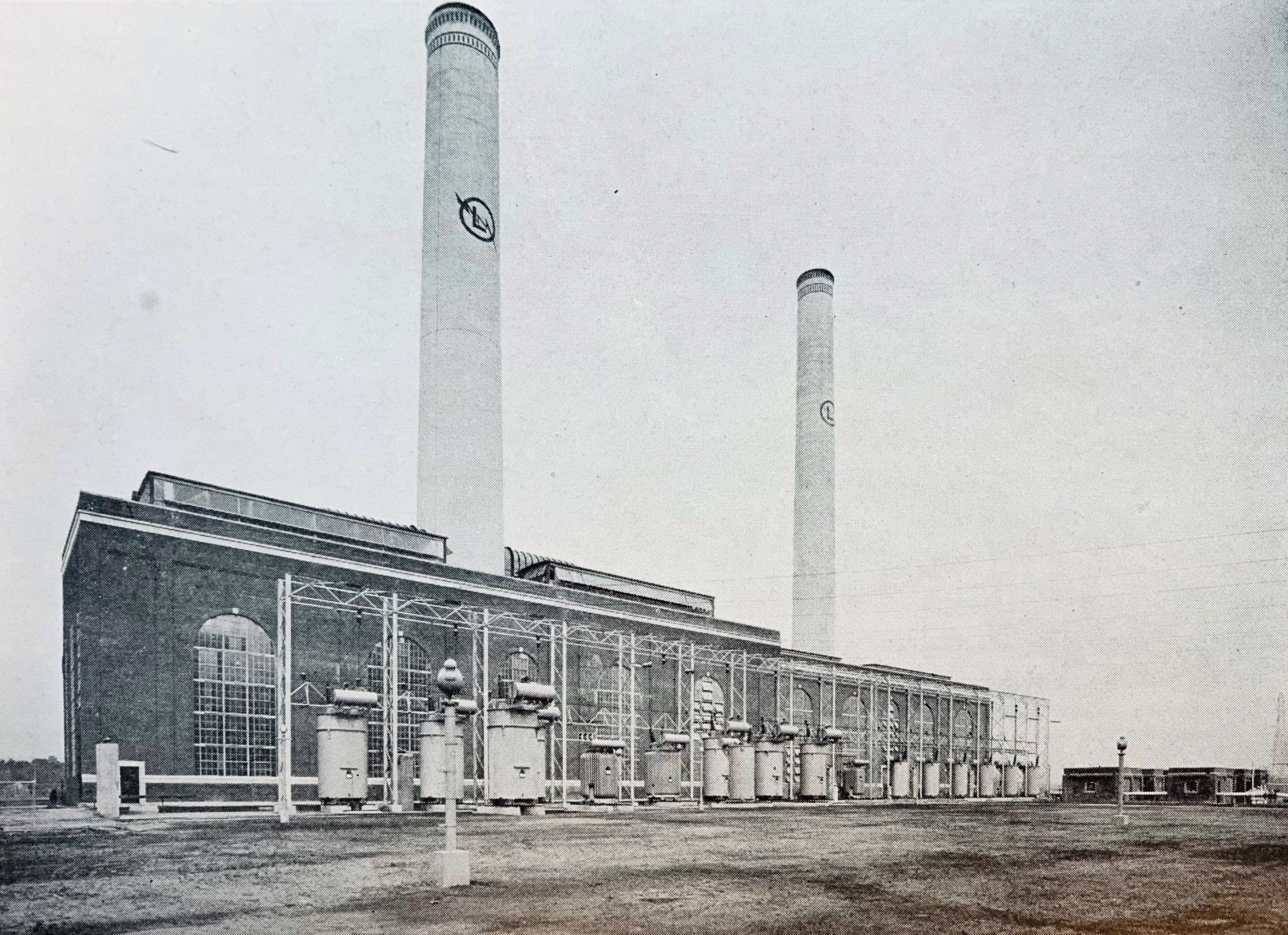Insights > Sterlington Station: A ‘mighty power giant’ that grew Louisiana 100 years ago
Sterlington Station: A ‘mighty power giant’ that grew Louisiana 100 years ago
11/19/2024

In the early 1920s, millions of Americans were wearing rose-colored glasses. The First World War had ended, and many believed the world was now safe for democracy. Optimism and expansion could be felt everywhere, including in the electric utility industry, which was brimming with hope. Although much of rural America had yet to be electrified, most Americans had at least seen electric lights.
Harvey Couch, Entergy’s founder, set out to build a new generating facility in North Louisiana that would power his growing assets across Louisiana, Arkansas and Mississippi.
Ultimately, Sterlington, Louisiana, was chosen as the site for the new power plant. At that time, there were hardly any paved roads in North Louisiana, and traveling through the area meant staying overnight in small towns like Minden, Ruston, Tallulah, Winnsboro, Ferriday and Delhi. Cars had no air conditioning or heating, and neither did most homes.
In late 1924, Couch organized two new companies, the Louisiana Power & Light Company, which began buying electric facilities in North Louisiana, and the Louisiana Power Company to build the new power station.
Sterlington was chosen for three main reasons:
- An abundant supply of natural gas had been discovered in the area.
- The nearby Ouachita River could provide adequate water for plant operations.
- The location was at the heart of a growing agricultural and industrial region.
Construction of Sterlington Station began in 1924, and it was placed into service in November 1925, during a period that also saw the establishment of the FBI and the first Macy’s Thanksgiving Day Parade. In a book recounting the history of LP&L (an Entergy predecessor, Sterlington Station was described as a “mighty power giant” contributing to a “Greater Louisiana and Greater South.”
Initially, Sterlington Station had two 12.5-megawatt turbogenerators, producing a total electric output of 25 megawatts. It remained LP&L’s primary power plant for more than a quarter-century until the first unit at Ninemile Point was completed in 1951.
Sterlington Station was known for its busyness and cleanliness. Employees worked long hours and took pride in keeping the facility in top condition.
At that time, Sterlington had only a post office, a drug store and two grocery stores. It didn’t even have a bank. Housing was also limited, so the company built a village adjacent to the plant with accommodations for nearly 50 families. Rent ranged from $15 to $20 a month. The village had concrete sidewalks, gravel streets, and modern utilities like gas, electric, and sewer services. It even included a school and a church. In 1944, as local operations expanded, the company built 32 additional homes for employees.
At the plant itself, there was a boarding house known as the “Club” for unmarried employees, which could accommodate about 20. Upstairs, employees had rooms, while downstairs was a recreation area with furniture and tables for card games.
As demand for power grew, Sterlington Station expanded. Two additional turbogenerators, each with an output of 30 megawatts, were placed into service in 1928 and 1929. This expansion made Sterlington Station one of the largest power plants in the South. By 1929, it was the leading electric producer south of St. Louis and Baltimore.
By the end of 1927, a year before the additional turbogenerators at Sterlington Station came online, LP&L was serving 15,250 customers in Louisiana. Today, Entergy Louisiana serves more than a million customers across the state.
While the hard work and activities in and around Sterlington Station are now distant memories captured by retirees and others in historical documents and photographs, the impact of the plant and its workforce lives on.
“Sterlington Station’s legacy is a testament to the hardworking people who have powered Louisiana’s growth over the past century,” said Phillip May, Entergy Louisiana president and CEO. “This facility and the dedicated employees who worked there helped build our economy and contribute to the wonderful state Louisiana is today. We honor them and their lasting impact.”
Although natural gas remains a key part of Entergy Louisiana’s diverse power generation portfolio, the company announced in January 2024 plans to build a 49-megawatt solar facility next to the site where Sterlington Station was constructed a century ago — a symbol of its commitment to a cleaner, brighter future.

